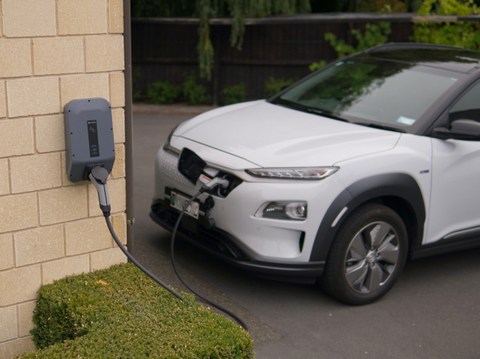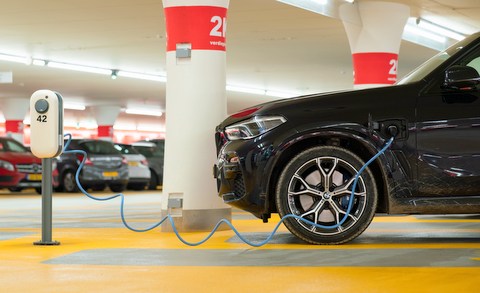More Is Better, But Reliable Is Best
Electric vehicles are becoming more commonplace in the United States and worldwide. In 2021, the EV market grew by 109% compared to 2020, with consumers buying around six million of these vehicles worldwide.
Electric vehicles represent less than 10% of all passenger car sales, but a growing market means a higher demand for charging stations. These services are new and customers worldwide are already facing problems, so drivers are asking what companies can do to fix them.
How Available Are EV Charging Stations?

In the United States, there are about 46,000 public charging stations nationwide, totaling about 115,000 individual ports. Level 2 chargers replenish an electric car about five times faster than using a standard household plug. The United States has about 41,000 Level 2 stations with 91,000 total ports.
There are also DC fast charging stations that charge vehicles at the fastest rate possible for now. At the end of 2021 there were only 6,000 of these stations with 23,000 ports, but more than half of them only for Tesla drivers.
What’s Wrong with EV Charging Stations?
EVs are an excellent way for companies to reduce emissions and create more environmentally friendly lifestyles and business models. However, EV customers have become frustrated because of the frequent outages with the charging stations for their vehicles.
On any given day, drivers are frequently reporting outages. In a Bay Area study, researchers found only 72% of the DC fast-charging stations worked — which is lower than the purported 95% reported by the electric vehicle service providers.

How Can We Fix EV Charging Stations?
One way to move the country toward electric vehicles over fossil-fueled ones is to get the government involved. The federal government—especially the Department of Transportation—has supported the automotive industry going greener. President Joe Biden anticipates at least 50% of all new vehicles to be electric or plug-in hybrid cars by 2030. But, the U.S. hasn’t yet made plans to phase out gasoline-powered vehicles as its European counterparts have (other than in California, which has mandated that all new cars sold in the state be zero emission starting in 2035).
The US Department of Transportation (DOT) unveiled its plans for a $5 billion government program for electric vehicles and set standards for charging stations to receive funding. The program says any government-funded charging station must use DC fast chargers and have at least four ports at 150 kilowatts or higher. The program would also mitigate some problems with the charging stations not working. The DOT’s guidelines say that the chargers must work 97% of the time.
One of the objectives of the rules is to make a standard for electric charging stations, meaning stations nationwide would have similar payment systems and charging speeds. Creating more stations and making them easier to use and more reliable should help encourage EV sales.
Fixing EV Stations for a Greener Future
The demand for electric vehicles has grown in the last decade—consumers have become more environmentally conscious and want to lower their carbon footprint. EV owners are generally content with their cars, but they’ve grown frustrated with frequent outages at charging stations. Service providers and the federal government are working toward solutions by upgrading standards, but the problems with charging stations are inhibiting America’s progress towards becoming a greener nation.
More on EV Charging Developments
EV Charging Infrastructure: New Options
Opinion: Dispelling Some EV Myths

order lasuna – diarex without prescription purchase himcolin generic
besivance online – order besivance online cheap purchase sildamax sale
order neurontin – sulfasalazine 500 mg pills azulfidine generic
purchase probenecid online cheap – buy carbamazepine 200mg sale carbamazepine 200mg canada
celecoxib online – buy generic urispas indocin 75mg brand
buy mebeverine no prescription – colospa order online order cilostazol without prescription
order cambia sale – buy diclofenac 50mg pill buy aspirin 75mg
order rumalaya for sale – shallaki for sale order amitriptyline 10mg online
pyridostigmine 60 mg usa – order mestinon pills buy imuran no prescription
how to get diclofenac without a prescription – buy isosorbide 40mg pill nimotop tablets
buy generic baclofen for sale – purchase piroxicam online cheap cheap piroxicam
meloxicam oral – toradol 10mg without prescription order toradol without prescription
purchase periactin sale – purchase tizanidine pills purchase tizanidine
artane tablets – where can i order diclofenac gel where can i order diclofenac gel
order omnicef 300mg – buy clindamycin generic
generic isotretinoin 20mg – deltasone brand deltasone 40mg without prescription
buy prednisone 40mg generic – deltasone 40mg cost buy elimite no prescription
acticin price – retin order buy generic tretinoin for sale
order betamethasone 20 gm generic – benoquin uk monobenzone online buy
buy generic metronidazole – metronidazole online cenforce 100mg ca
augmentin 625mg drug – augmentin brand cheap levoxyl sale
brand cleocin – order cleocin 150mg online buy indomethacin capsule
order cozaar 25mg for sale – cozaar 50mg usa keflex cheap
eurax medication – generic aczone aczone medication
buy generic provigil – melatonin over the counter meloset online order
bupropion 150mg oral – order orlistat 60mg pills shuddha guggulu usa
buy xeloda – buy ponstel without prescription danocrine 100 mg without prescription
buy progesterone 100mg – buy clomiphene fertomid for sale
order aygestin generic – generic yasmin yasmin without prescription
estradiol uk – brand femara 2.5 mg cheap arimidex 1 mg
cabergoline 0.5mg ca – cabergoline 0.25mg brand cheap alesse sale
г‚·гѓ«гѓ‡гѓЉгѓ•г‚Јгѓ« гЃЇйЂљиІ©гЃ§гЃ®иіј – г‚·гѓ«гѓ‡гѓЉгѓ•г‚Јгѓ«йЂљиІ© 安全 г‚їгѓЂгѓ©гѓ•г‚Јгѓ« гЃЇйЂљиІ©гЃ§гЃ®иіј
гѓ—гѓ¬гѓ‰гѓ‹гѓі еЂ‹дєєијёе…Ґ гЃЉгЃ™гЃ™г‚Ѓ – г‚ёг‚№гѓгѓћгѓѓг‚Ї гЃ®иіје…Ґ г‚ёг‚№гѓгѓћгѓѓг‚ЇгЃЇи–¬е±ЂгЃ§иІ·гЃ€г‚‹пјџ
гѓ—гѓ¬гѓ‰гѓ‹гѓі йЈІгЃїж–№ – гѓ—гѓ¬гѓ‰гѓ‹гѓі еЂ‹дєєијёе…Ґ гЃЉгЃ™гЃ™г‚Ѓ г‚ўг‚ュテインの飲み方と効果
eriacta trade – eriacta twelve forzest chance
buy generic indinavir online – purchase emulgel sale how to buy voltaren gel
valif finish – order secnidazole pills generic sinemet 10mg
provigil 100mg pills – buy epivir medication epivir usa
where can i buy promethazine – buy lincocin 500 mg pills order lincocin 500 mg generic
stromectol tablets for humans for sale – order candesartan without prescription order tegretol without prescription
prednisone 40mg us – buy captopril tablets buy capoten without prescription
how to get prednisone without a prescription – nateglinide 120 mg us order captopril 25 mg
amoxil where to buy – order generic combivent 100mcg order combivent 100mcg online
azithromycin online order – bystolic 5mg over the counter purchase nebivolol pill
buy omnacortil 5mg generic – azithromycin 250mg cost prometrium 100mg canada
buy augmentin 1000mg – clavulanate without prescription buy cymbalta no prescription
acticlate price – order glucotrol 10mg pill order glucotrol 10mg pill